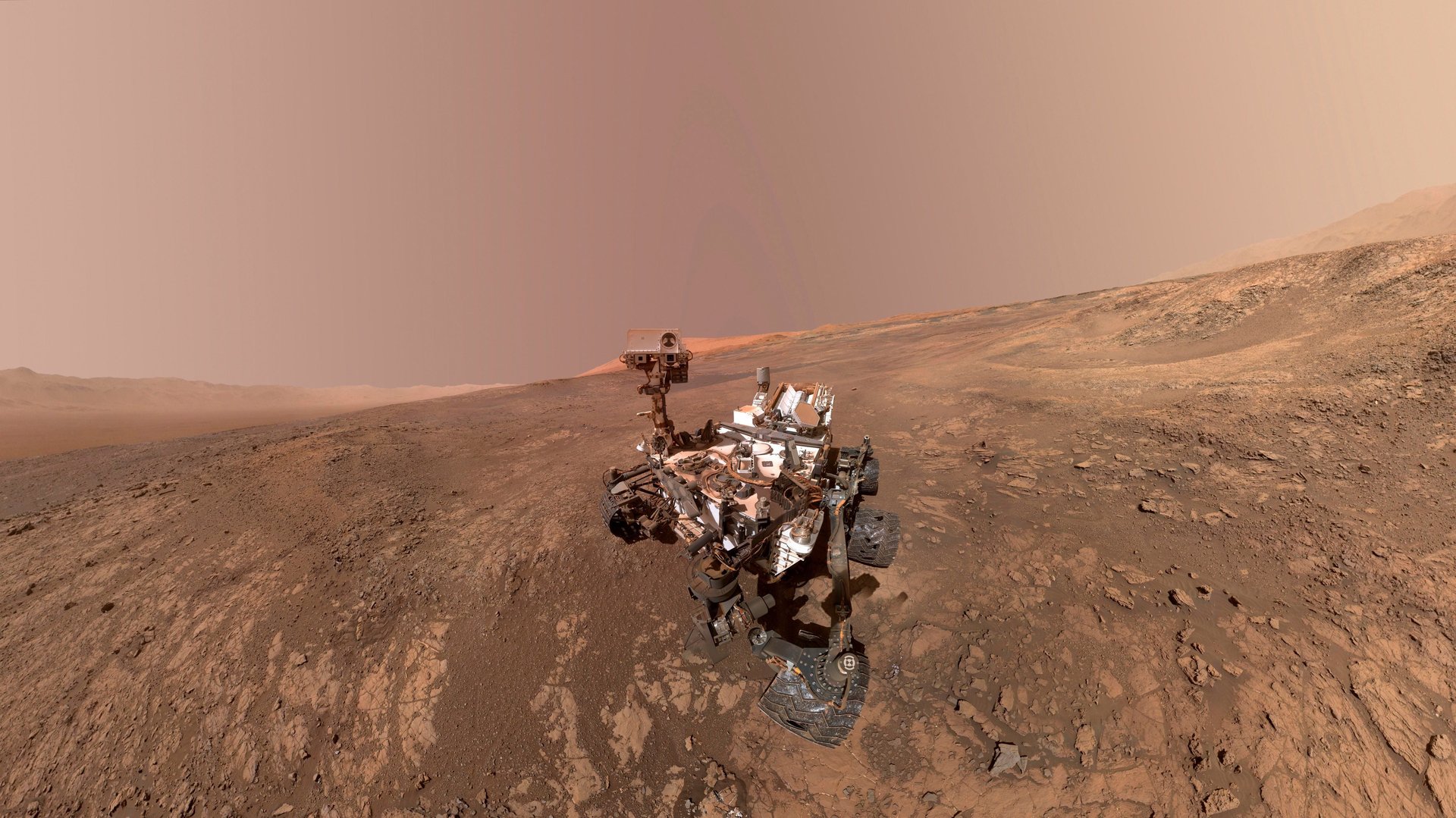Scientists found loads more molecules associated with life on Mars
The more we learn about Mars, the more it seems that the red planet once could have harbored life.


The more we learn about Mars, the more it seems that the red planet once could have harbored life.
In two studies published today (June 7) in the journal Science, researchers from NASA reported the largest amount of organic matter on Mars ever obtained by the Curiosity rover. The Sample Analysis at Mars (SAM) arm of the rover found seasonal fluctuations of methane gas in the planet’s atmosphere as well as organic material from shallow-soil sample analyses from Gale crater, which was a lake some 3 billion years ago.
Both the methane gas and soil compounds are organic matter. This is the matter—chemically characterized as combinations of carbon, hydrogen, and other elements routinely found in biology like sulphur and oxygen—often associated with life. But it isn’t always evidence of it. Occasionally, rocks can make produce them on their own through geological processes, and meteorites can also bring them from neighboring planets. However, finding organic material in such abundance suggests that it potentially has biological origins—either from bacteria or other forms of life that existed long ago.
In the first study, a team led by Christopher Webster, a chemist at NASA’s Jet Propulsion Laboratory in California, describes how Mars’ atmosphere appears to have low levels of fluctuating methane. The planet’s atmosphere—mostly carbon dioxide—is almost nothing like our own. And it provides just a fraction of the pressure we feel from the air on Earth. Yet over the course of 55 Earth months (three Martian years), Webster and his team were able to use SAM to detect tiny, regular patterns in which methane—natural gas—increased from 0.24 to 0.65 parts per billion at the end of northern Mars’ summer. Methane, found on Mars before in plumes or patches, has never been detected in instances that scientists had been able to see repeatedly.
“We don’t know if that methane is ancient or modern,” Webster said in a press conference. He and his team also can’t distinguish whether this methane is the product of geological or biological activity. They are fairly certain that it comes from melting water-based crystals, called clathrates, buried just below the planet’s surface. The crystals may have obtained methane from ancient forms of life.
A second analysis by SAM found evidence of larger organic compounds five centimeters (two inches) below the surface of Mars at the site of a lake that dried up billions of years ago. These soil samples were purposely taken miles away from the first detection of organic material on Mars made by the rover back in 2014. The fact that similar molecules were also present at this new site suggests that this kind of organic material is present in abundance.
Researchers believe that the samples are actually remnants of much larger supply of organic material. “That rock has been sitting there has been exposed to radiation, which would degrade organic material,” Jennifer Eigenbrode, a biogeochemist at NASA’s Goddard Space Flight Center and lead author of the paper, said. In followups, the team hopes to get to dig deeper to look for more-complicated organic molecules.
The next research question to tackle: Where did this material come from? If it is biological, it could give scientists clues as to how life actually begins on any planet. Millions of years of life on Earth has destroyed most of the early evidence of how it started. And if life on Mars was possible in the past, it could be possible in the future—an important consideration should we ever decide to make this neighboring planet a home for ourselves.